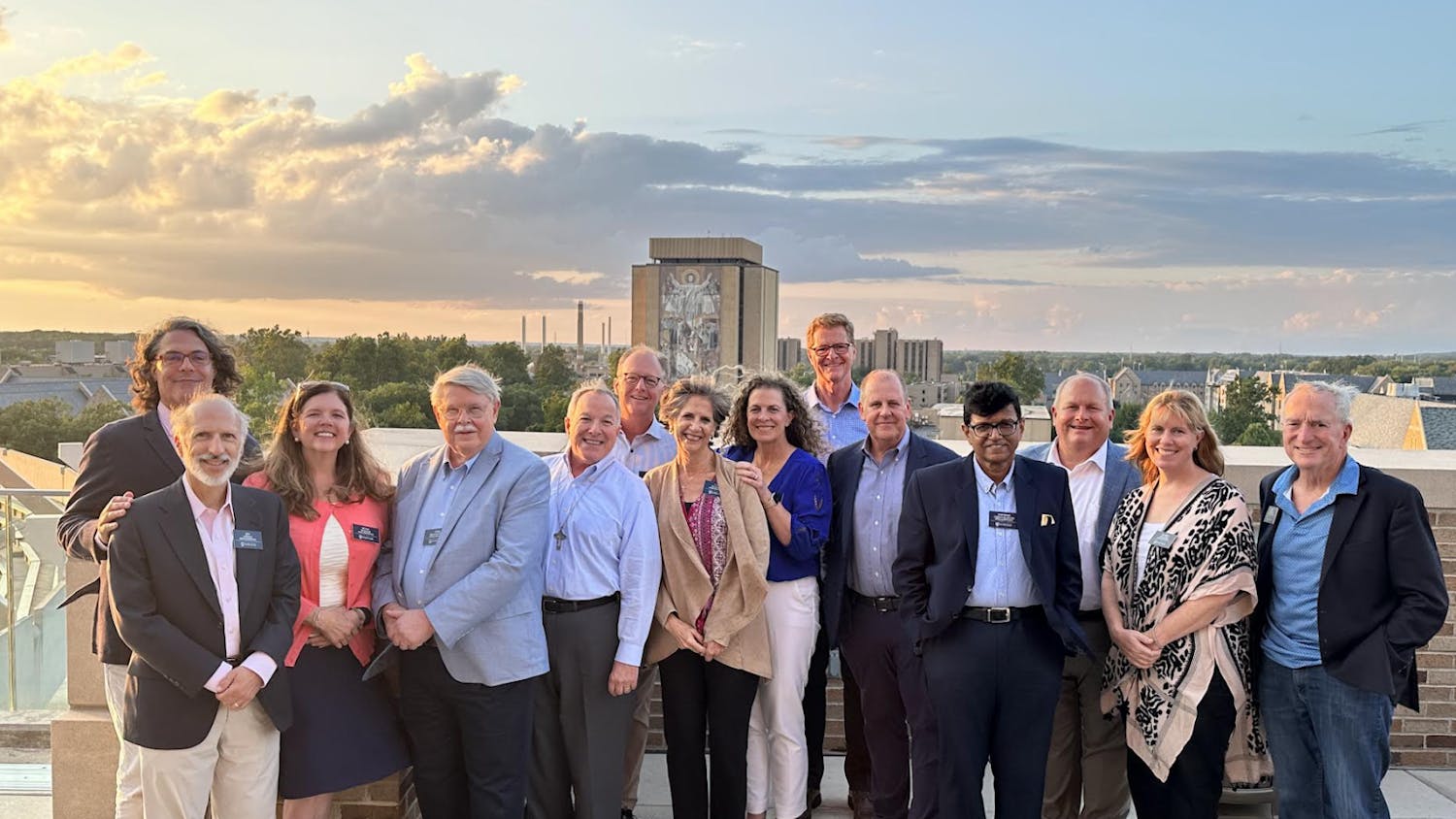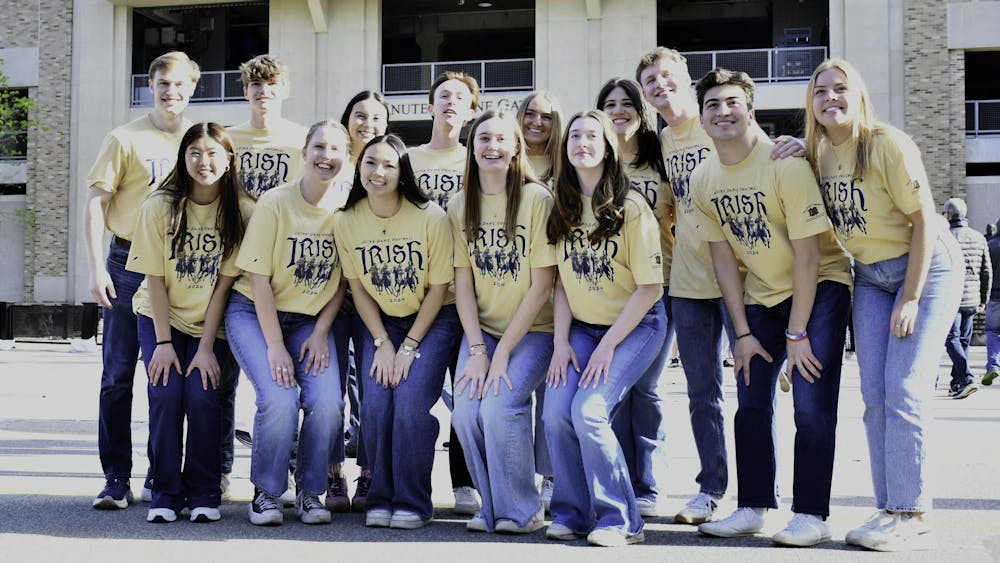Notre Dame’s chief academic officer, provost Tom Burish sets the academic direction for the entire University. In an Aug. 1 press release, the University announced after 15 years in the provost role Burish plans to step down in July of 2020. His replacement, administrators and faculty say, will need to work with students, faculty and administrators to meet the unique demands of higher education.
Christine Maziar, Notre Dame’s vice president and senior associate provost, said the provost is tasked with a heavy workload.
“If I talk about what a day for Tom really looks like, I think it’s starting at 7 o’clock in the morning and going until 10 o’clock at night,” Maziar said. “It’s pretty intense. I think it would be hard to say that a provost has a typical day.”
Along with the University President, the provost is “the final arbiter of all things academic,” said Louis Nanni, vice president for University relations. By collaborating with faculty, administrators and students — and by leading fundraising efforts — the provost works to achieve a grand strategic vision for academic life.
Working with faculty
“Departments are constantly changing,” associate professor of Spanish Ben Heller said. “You need to make new hires because either people retire or majors have grown, or you have research needs that aren’t being met.”
The provost manages this constant flux, deciding which programs to grow and who to hire. Every professor who receives tenure, Heller said, must be approved by the Office of the Provost. The tenure review process is extensive, requiring several levels of administrators to examine professors’ credentials — from the deans to the provost to the president.
“I don’t know if they read everyone’s books from cover to cover, but they read a ton of material related to the tenure,” Heller said. “Then the Provost Advisory Committee does the same. The provost does the same. And even the president does the same. And they can say ‘no.’”
The Faculty Senate, a representative body of elected faculty members, consults with the Office of the Provost, providing administrators with faculty input and expertise. Heller currently chairs the Faculty Senate, and he said communication between the provost and the faculty is critical.
“I think in previous years, before Provost Burish was in the position, there was not always great communication between the faculty and the administration generally,” Heller said.
With Burish, however, Heller said faculty feel their voices have been well represented.
Student affairs
The provost’s decisions also have far-reaching impacts on students.
“Academic concerns are, by their nature, both faculty and student concerns,” Maziar said.
Although the provost is primarily concerned with questions of academics, Maziar said the Office of the Provost has to monitor all policy decisions affecting student life.
“There are student concerns that lie outside of the academy, and those would be Student Affairs, Residential Life and that sort of thing, but we stay tuned in to those concerns because they can have an impact on academic life,” Maziar said. “But we don’t have direct responsibility for that.”
To stay connected with students, Burish “makes a habit” of eating in the dining halls, Maziar said.
“He’ll just sit down with a group of students who may not know who or what a provost is until after they’ve had dinner with Tom,” he said. “He picks up a lot of interesting things in those conversations.”
Fundraising
Beyond collaborating with students, faculty and other administrators, the provost also supports the University financially by leading fundraising efforts.
“At many other places, the provost role is not as hands-on in fundraising activities, but that fundraising is important to an institution like Notre Dame and it means that it puts Tom on the road quite a bit,” Maziar said. “Just last week, he was in China and Rome.”
That fundraising role, Nanni said, is in support of the larger academic mission. Specifically, as the cost of higher education continues rising nationwide, Maziar said this fundraising helps support access and affordability for lower-income students.
Waves of change in higher education
Burish has held the provost position for over a decade. If his predecessor also stays in the role long term, Maziar and Heller predict he or she will have to contend with many major shifts in higher education.
Across the country, “the system of tenure itself is being eroded, and many more people are being hired without tenure and without the chance of tenure,” Heller said.
Nationwide, Heller said, colleges and universities are hiring more part-time professors, who don’t receive the same protections as tenured professors. Without long-term contracts, part-time professors “live a more precarious existence,” Heller said.
“Notre Dame is a Research I university [defined by the Carnegie Classification of Institutions of Higher Education as having the highest levels of research in the country] where that is less of a problem generally,” she said. “But we’re not completely insulated from this. And I think that’s one of the issues that the new provost will have to keep an eye on.”
The challenges and opportunities of a Catholic university
Maziar said Notre Dame’s Catholic identity is “both an opportunity and a challenge” for the provost.
“It’s an opportunity because it gives us a distinctiveness that makes us different than other schools,” she said.
However, she also said it can pose challenges for the provost as he tries to recruit new faculty members who may be skeptical of the Catholic mission.
“In the larger academic world, outside of Notre Dame, it’s common for people to misunderstand Catholicism and the richness and variety of Catholic experience and expression,” Maziar said.
Nanni said the University’s Catholic mission requires Notre Dame’s provost to balance three major goals for academic life at the University.
“Father John [Jenkins, University President] talks about a three-part vision for the University,” he said. “One is to offer an unsurpassed undergraduate experience. Two is to be premier in our research and our graduate work. And three is to make certain that our Catholic character informs all that we do.”
The provost, he said, has to juggle those three goals which can often be in tension with each other.
What qualities should Notre Dame’s new provost have?
Before assuming the Notre Dame provost position in 2005, Burish rose through the ranks of academia. According to Notre Dame’s press release announcing Burish’s departure, he spent many years as a psychology professor before he became the provost of Vanderbilt University and, later, the president of Washington and Lee University.
Heller said he believes the next provost should also rise from the faculty ranks.
“[I hope] the next provost really has a background that will allow him or her to understand the particular mission of this University, as a Catholic institution of higher learning,” he said.
Nanni said the next provost will need to have a zeal for Notre Dame’s Catholic mission but will also “have to understand the intricacies of academic leadership and all that that entails.”
Dennis Brown, a spokesperson for Notre Dame, declined The Observer’s request to interview a member of the search committee.
“When the committee has something to say, it will come from Father Jenkins, the committee chair,” Brown said in an email.
He also declined a request to provide a comment from Jenkins about the committee’s criteria for a new candidate.
Burish’s work behind the scenes
Although Burish has spent a long time in the provost position, Nanni said he doubts the University’s academic direction will change much after Burish steps down.
“We’re all here [as] stewards of a mission that is greater than us all. I think that in some ways we do less to change Notre Dame, and Notre Dame does more to change who we are,” Nanni said.
Nevertheless, Heller, Nanni and Maziar all agreed that Burish has had great influence over the machinations of academic life. But for Burish, Maziar said, that has meant largely working “behind the scenes.”
“Like any really great leader, he doesn’t bring attention to himself,” Nanni said. “In fact, he would be about empowering others to succeed and excel and letting them bask in the glory of their accomplishments. So he’s been very self-effacing all the way through.”













